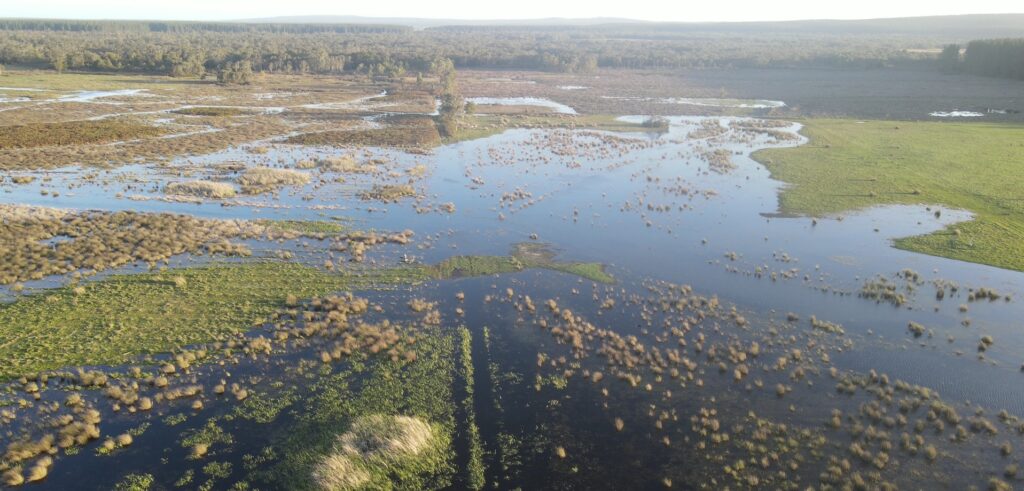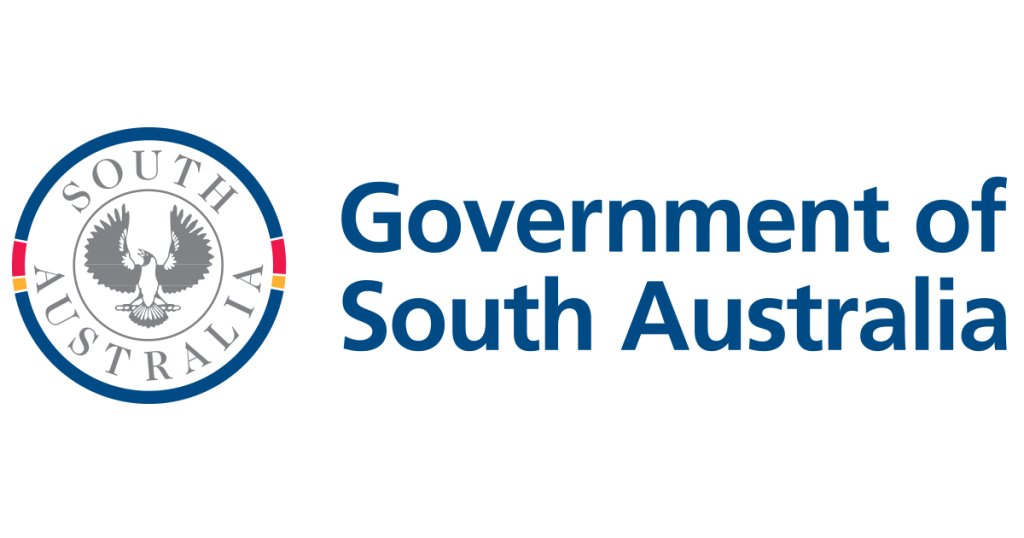The sound we were waiting for… the Growlers are calling in the Mt Burr Swamp Stage 2 restoration area!
In the July newsletter, we gave a glimpse into the hydrological restoration of wetlands in the Stage 2 area of Mt Burr Swamp, an area previously planted to blue-gums that you will see reappear in the pdf viewer below in 2023, by clicking through the four aerial images shown.
Mt-Burr-Swamp-2010-2018-2023More recently, I made a routine visit to the site again the other day to check on water levels, and to take some fresh images of current conditions. Even though it has only been a few short months since the works were completed, things are looking absolutely fabulous out there!
The vegetation response is already underway in parts of the wetland where the water level has been reinstated, with aquatic plants beginning to emerge in places previously dominated by pasture grasses, as shown below.

And then, while I was taking a look at the water’s edge, I started to hear a lone Growling Grass Frog (aka Southern Bell Frog) calling in the distance. One by one – as is the way with this species – then dozens of other frogs joined in the chorus, including some a short distance from where I was standing. You will have to excuse the audio quality (which doesn’t pick up the sounds further away), but the video recording below will hopefully give you a taste of what it sounded like nearby after the chorus began!
Over the years ahead, we expect a wide range of species of animals (and plants) to begin to bounce back in this newly restored area of habitat, joining the growing list of wetland species that have already been detected, such as Brolga, Australasian Bittern, Royal Spoonbills and Lathams Snipe.
Being strategically situated immediately adjacent to Marshes Native Forest Reserve (see background in image below), which is a fantastic area of remnant vegetation with high biodiversity, gives the recovery process an immense and spontaneous boost by taking advantage of the natural dispersal behaviours of less-mobile fauna species that already occur nearby. It should come as no surprise that building on key natural features like this in the landscape is the quickest way to ‘reintroduce’ species to restoration sites, because nature literally does all the work for us!
If you are interested to see the wetland restoration works at Mt Burr Swamp this spring, then your are in luck, because this is one of the ecological restoration sites we will be visiting on NGT’s Grand Tour in the first week of October. Please also note that you can book single days of the tour if you are not able to join us for multiple days.
To book for Mt Burr Swamp on Day 4, please click here or on the button below.

The project was supported by the Limestone Coast Landscape Board, through funding from the South Australian Government’s Landscape Priorities Fund and the Australian Government’s National Water Grid Connections Funding Pathway.



